A complementary Musicarta Patreon module
Staggered Pentatonic Scales
Scale Practice Pattern and Module Riff
This is the first of two free-access web pages in a creative module based on the minor pentatonic scales (with the #4/b5 chromatic passing tone/CPT).
The talking heads videos explaining how to use this material are all in the Mister Musicarta YouTube Staggered Pentatonic Scales playlist.
There are 'stepping stone' drills and slow-mo versions for most the material here - so hang around and give it a chance!!
The Staggered Pentatonic Scales practice pattern
Here's the full-on 'staggered' scale practice pattern. For reference only - there are build-up drills below!
No fingering on the scrolling MS in the video, but there is in the MS you can download for this module.
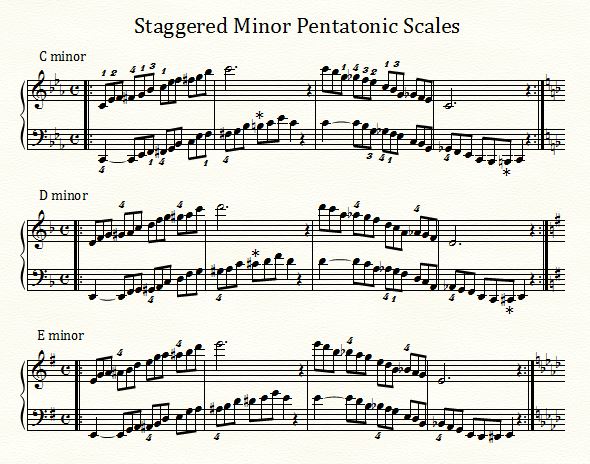
Note: The left hand/bass uses a major seventh (*) in order to fit the pattern more tunefully.
If you haven't already, download the MS for this module using this link.
Build-up
You might not be able to take that on board immediately, so here are two 'build-up' drills.
(They're perfectly respectable 'stand-alone' pentatonic scale drills, btw!)
Build-up drill 1
The first build-up drill is in 4-4 and has no overlap.
The fingering for the minor pentatonic + cpt (one octave) is given. You will need to learn this fingering or any reliable alternative.
The left hand could make some adjustment adjustment to the fingering just before swapping to the new tonic - let your hand be the judge!
Build-up drill 2
The second build-up drill is in 3-4, so now with overlap. The fingering should be 'settling in' by now.
Once you're comfortable with those two patterns, graduate to two octaves and tackle the two-octave pattern.
The Musicarta
PENTATONICS WORKBOOK
|
The immediately recognizable five-tone pentatonic scales are easy to find and underpin much of the popular music we all love. The Musicarta Pentatonics Workbook is a fully featured video course with 50+ web-page lessons, accessible to players of all levels and orientations. This workbook is sure to give your musical adventuring a powerful boost! |

|
|
Click through to the Pentatonics Workbook YouTube playlist here.
Some material also available on Musicarta Patreon.
A sample staggered-pentatonic riff
As Musicarta frequently points out, the pentatonic scales are 'practically music already'. None more so than the pentatonic minor (here with the one CPT).
So here we have an off-the-shelf riff featuring the staggered-start minor pentatonic scales you have been learning (above).
Note that, apart from the first time, the right hand starts on the second note of the rising or falling scale. Think ahead!
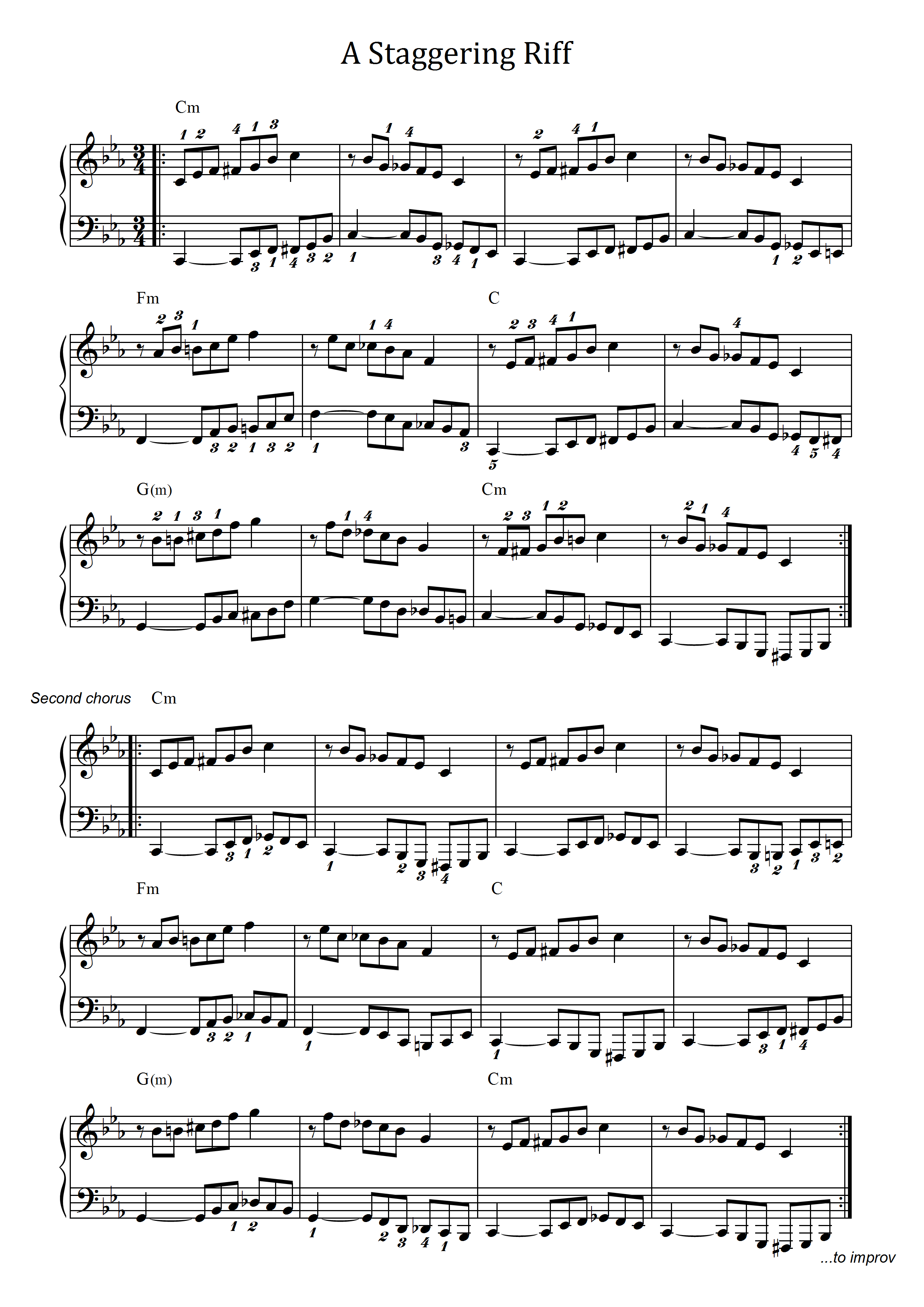
Don't forget, you can download the MS for this module using this link.
First thing to wrap your head around is the 3-4 time signature. No big deal! The musical power of the minor pentatonic scale overshadows this so-called 'waltz time' entirely! The 'jazz waltz' is also a venerated genre.
Secondly, note the multiple adjustments to the pure pattern made to accommodate tunefully to the chord changes.
In the second chorus, the left hand defaults to a generic four-note-up, four-note-down accompaniment pattern - on the same rhythm. This is just half-the-scale-and-turn-back - figure it out!
Sample riff - slow-mo performance
You might find this slow-mo riff performance useful - to play along to as you're learning, for example.
Practice hands separately. Fingering is not given! (The time you'd spend 'copying' the fingering is far better spent demanding that your hands 'come up with something workable'...)
MUSICARTA PATREON
A new way to study keyboards
|
Enjoy access to a whole bunch of Musicarta workbooks, repertoire and theory-in-practice learning material, with exclusive new content being added all the time! At only $5.00 a month, Musicarta Patreon Tier One can be your creative keyboard companion, encouraging and supporting your endeavors with a broad variety of creative learning opportunities. Accessible to players of all levels and orientations, Musicarta Patreon Tier One is an excellent way to signal your intention to nurture your creative side! |
Contents include: The Musicarta Hanon - remade for the modern keyboardist 'Scale City' - the essential video resource for easy scale mastery The Beat & Rhythm Workbook - tackle syncopation methodically! Pyramids Variations - 'composing at the keyboard' for beginners 'Majestic River' - a beautiful rock chord study/piano solo Musicarta Easy Piano Style - aka new 'Play like Enya' video pages |
...and lots, lots more!
Browse the Musicarta Patreon sample content page here!
"Going on from here"
Improv work-out
The riff fades out on the C pattern of the second-chorus texture, with the left hand supplying the 'four up, four down' accompaniment.
The staple requirement of solo (blues) improvisation is to set your left hand accompaniment to automatic while your right hand 1. plays various riffs you will already worked out, or, hopefully, 2. improvises timeless solos marveled over down the ages.
The staggered pentatonic scales work will help you work towards this goal.
'All you have to do' is, using the structure above, work out/improvise tuneful groups of minor pentatonic scales-tones, like the ascending and descending minor pentatonic scales in the riff, while the left hand continues to set off on - for example - the four-notes-up, four-notes-down accompaniment pattern in the second chorus of the 'Staggered Riff'.
Easy, it isn't! Here's a video of some sample 3-4 jamming riffs. Section descriptions, separate segments and slow-mo version for ease of study are on Staggered Scales, page 2.
Just before you go...
A different scale practice pattern
Using the hand position and fingering from the build-up drills, run through the white-note tonics on this scale practice pattern. Get a sense of the shape of the sound: it 'rhymes', and this should encourage you to get through to the end in time and in one go.

Because you are of course no 'slave to the dots', you will quickly realize the pattern alternates these two 'contours'.
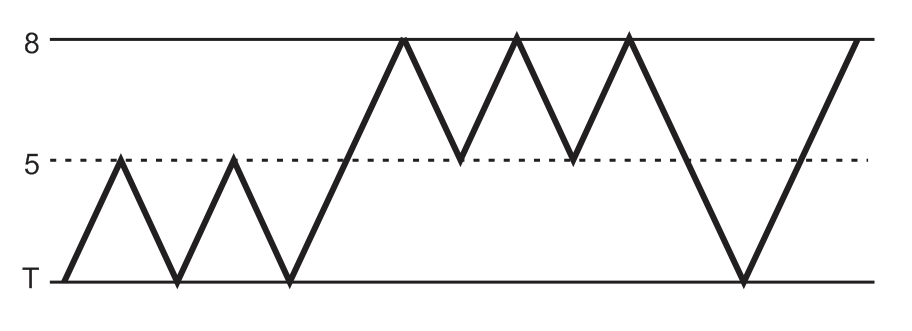 |
Followed by...
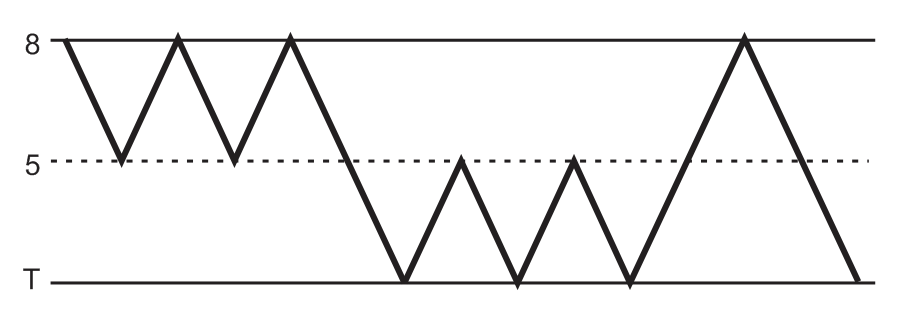 |
Alternate the two contours up through the rest of the white-note tonics (from the bottom on Bm pentatonic, from the top on Cm pentatonic, and so on).
You can either copy the fingering from Build-up 1 above, or use the opportunity to 'work it out again from scratch'. (The improvising popular-style keyboard has the music in his/her head, and trains 'can-do' hands to 'just play it'!)
Practicing works! Daily application to this and other (minor) pentatonic scale exercises will accustom your hand to the 'keyboard feel' of these essential scales, as well as tuning your ear to the landmark scale-tones.
The Staggered Scales jamming workshop awaits...
SCALE CITY
An essential resource for popular-styles pianists
|
Should popular-styles pianists 'bother' to learn their scales? Yes! Of course, you will want to be able to rip up and down your keyboard, regardless of how many black keys get in the way. But, more than that, learning the scales is the best way to learn the keys. Too many popular-styles keyboard players are nervous of playing in three/four/five sharps or flats. That's not something the 'really useful' keyboard player can settle for! |
Reference video performances of all 36 major, melodic minor and harmonic minor scales. Why those notes are in those scales. Once you understand that, the keys are obvious! A methodical explanation of the scale fingering - much better than just following your nose... Proven ways to accelerate your progress - practice patterns, visual scale keyboards and more. The 'other scales' - pentatonic major and minor and the modes. |
Bite the bullet and start your (catch-up?) campaign now!
Scale City is exclusively available on Musicarta Patreon
Browse the Musicarta Patreon sample content page here!
The MusicartaA methodical approach to keyboard syncopation for
|
PUBLICATIONS
exciting keyboard
creativity courses
CHORDS 101
WORKBOOK

~HANON~
video course

Musicarta
Patreon
PENTATONICS
WORKBOOK
video course

Creative Keyboard
video course

BEAT AND RHYTHM
WORKBOOK
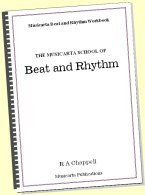
- Volume 1 -

12-BAR PIANO
STYLES WORKBOOK
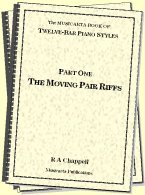
MUSICARTA MODES
WORKBOOK

PIANO STYLE
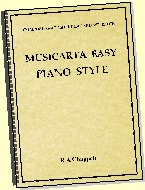
CANON PROJECT
video course

VARIATIONS
video course
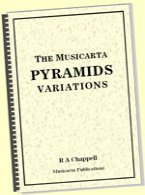
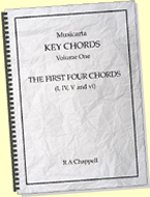
- Piano Solo -
video course
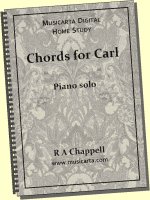
- Piano Solo -


YouTube playlists





 THE LOGO
THE LOGO
